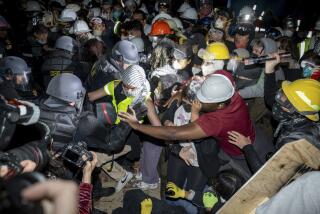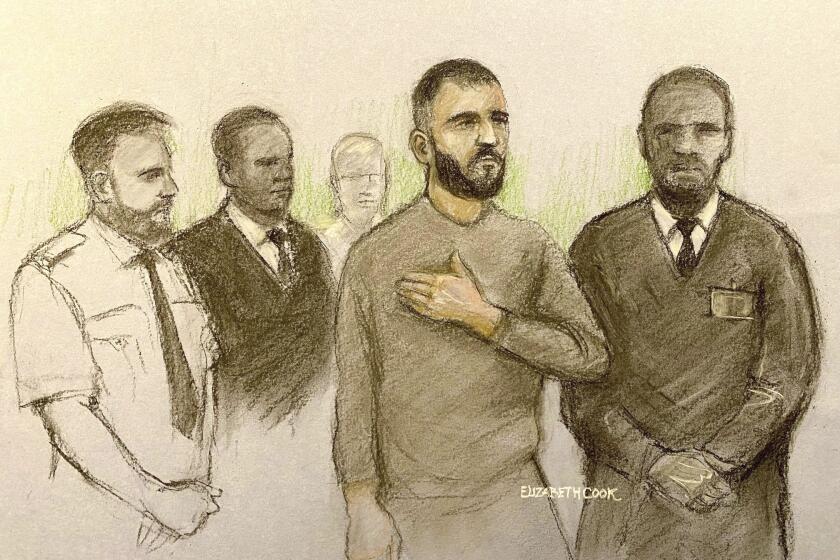Some Familiar Vows by New Burma Ruler
Since seizing power in a military coup two months ago, Burmese Gen. Saw Maung has squelched political debate, banned all gatherings of more than five people, illegally searched private homes and dismissed thousands of bureaucrats suspected of independent thought. His troops have killed more than 1,000 civilians, placed hundreds of others in indefinite detention and closed all the nation’s courts.
The general says his actions should not be misconstrued. Draconian measures are merely a prelude to democratic reform and representative government. The Burmese military, Saw Maung swears, is dedicated to “necessary change” and a “new direction.”
If the bloodied people of Burma seem less than sanguine about their future, it’s probably because they’ve heard it all before. In 1967, five years after he toppled the last freely elected government, Gen. Ne Win also promised change. He seemed to have little choice. The economy was so bad that Buddhist seers at the Sule Pagoda in downtown Rangoon warned that the entire country might perish unless the government followed a “new path” to the future.
On the day designated by the astrologers, Ne Win dutifully appeared and announced that Burma would proceed in a new direction without delay. The country no longer would follow the British custom of driving on the left, he proclaimed. Henceforth, all vehicles should travel on the right-hand side of the road. Different path, same direction.
Since massive rioting began last summer Burma has experienced more changes than in the preceding quarter-century. In the past three months there have been no less than four heads of state. The widely despised Burma Socialist Program Party is gone, replaced by the euphonious Party of National Unity. In a desperate bid for acceptance, the Socialist Republic of the Union of Burma even changed its name back to the more benign Union of Burma.
Unfortunately, the changes are largely cosmetic. The totalitarian regime established 26 years ago remains intact. Saw Maung may believe the worst is behind him. The election initially scheduled for December was postponed until “sometime” in 1989 without much public protest. Unable to unite behind a single candidate, the army’s opposition is increasingly fragmented. No less than 46 new political parties have registered with the military government, ensuring that the election, if not corrupt, will at least be chaotic.
But the recent decline in street demonstrations is deceptive. Protests of recent months coincided with the monsoon, a period when Burma’s ethnic insurgencies are immobilized by mud and malaria. During the rainy months of summer the entire army is available for duty in the cities. It was this surfeit of manpower that enabled Saw Maung to re-establish control last month. The approach of the dry season changes the equation. If the army does not immediately return to the mountains, insurgent forces scattered along the north and eastern frontiers could extend their operations to the fertile Irrawaddy plain, homeland of the Burmese.
The army is already under pressure. Far to the north along the border with China, attacks on police and other government officials by Burmese communists and Kachin guerrillas are becoming more common. Ambushes by Muslim separatists now occur in the once-quiescent Arakan State near Bangladesh. The strategic army outpost of Mae Tah Waw on the Thai frontier that fell to Karen guerrillas last month is still in rebel hands despite repeated attempts by 3,000 Rangoon troops to retake it. The insurgents may not be strong enough to topple the government in Rangoon, but they can make Burma ungovernable.
The Union of Burma has always been more oxymoron than nation state. Fully one third of Burma’s 38 million people are tribesmen who have little in common with the lowland Burmese. In 1947, when Burma was on the verge of independence, tribal leaders trekked down from the mountainous fringes of the country to pledge their support to the new central government. Rangoon, in turn, promised a large measure of autonomy to its ethnic and linguistic minorities.
After decades of constant warfare the Burmese Road to Socialism barely penetrates the northern teak forests of the Kachin, the Shan State’s rugged mountain valleys or the riverine jungles of the south inhabited by the Karen, Mon and Karenni. Ten ethnic groups--as well as the insurgent Burmese Communist Party--have proclaimed opposition shadow governments.
All the rebel armies combined probably number no more than 50,000 soldiers, no match for Rangoon’s 170,000 troops. But hill tribe antipathy combined with the Burmese demand for democracy could extend the rebels’ reach beyond their jungle sanctuaries and move the country even closer to anarchy.
Recently, Burma marked the end of the monsoon with its annual Festival of Lights. Normally, the celebration features rockets and Roman candles that illuminate the night sky. This year a nervous military government banned all pyrotechnics. Tight security and an overnight curfew continue to keep the capital quiet. But if the alliance between dissident students, ethnic insurgents and communist guerrillas continues to grow, Burma’s generals may discover that the fireworks are just beginning.
More to Read
Start your day right
Sign up for Essential California for news, features and recommendations from the L.A. Times and beyond in your inbox six days a week.
You may occasionally receive promotional content from the Los Angeles Times.






